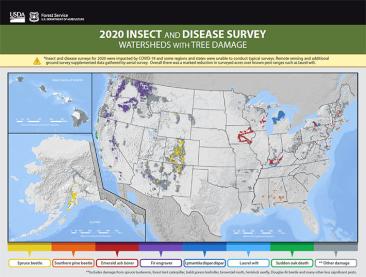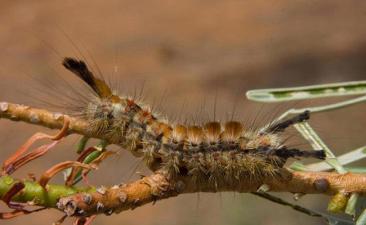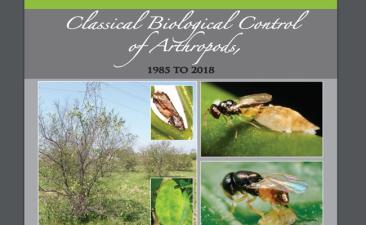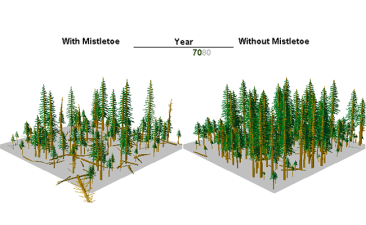Assessment & Applied Sciences
Mapping & Reporting

Forest Health Protection (FHP) Mapping & Reporting conducts surveys to detect and appraise insect infestations, disease conditions and man-made stresses affecting trees. FHP Mapping & Reporting establishes a monitoring system throughout the forests of the United States to determine detrimental changes or improvements that occur over time, and report annually concerning such surveys and monitoring.
Learn more about mapping & reporting
Aerial Survey

Aerial Survey include insect and disease surveys, aerial photography and aerial application to assist federal and state partners and the public in meeting forest health objectives. The primary function of FHP aviation is to implement safe and efficient operations considering state of the art tools, technology, and philosophy embracing the principles of sound risk management applied throughout the system.
Learn more about aerial survey
Biological Control

The Biological Control program is tiered to the broader Forest Service's National Strategic Framework for Invasive Species Management as well as regional plans dealing with invasive species. The Biological Control program focuses its resources on a few insects and weed species that have the greatest potential for biological control.
Learn more about biological control
Biopesticides

The Biopesticides Program serves as an up-to-date information source on biopesticides, biologically based products such as semiochemicals and microbial agents, used by State and Private Forestry staffs, nationwide, for short-term control of invasive species.
Learn more about biopesticides
Publications

The Forest Health Assessment & Applied Sciences Team (FHAAST) produces publications, reports, and posters that address forest health-related disturbances. Topics include forest insects and diseases, native and invasive species, biological control, biopesticides, aerial survey, forest disturbance detection and risk assessment.
Forest Vegetation Simulator Models

The Forest Vegetation Simulator (FVS) is a family of models used for predicting forest stand dynamics (tree growth, mortality, regeneration, management, disturbance, etc.) throughout the United States. The Forest Health Assessment and Applied Sciences Team supports a variety of insect and pathogen models that allow FVS users to incorporate forest pest disturbances into their FVS projections.
Learn more about forest vegetation simulator models
